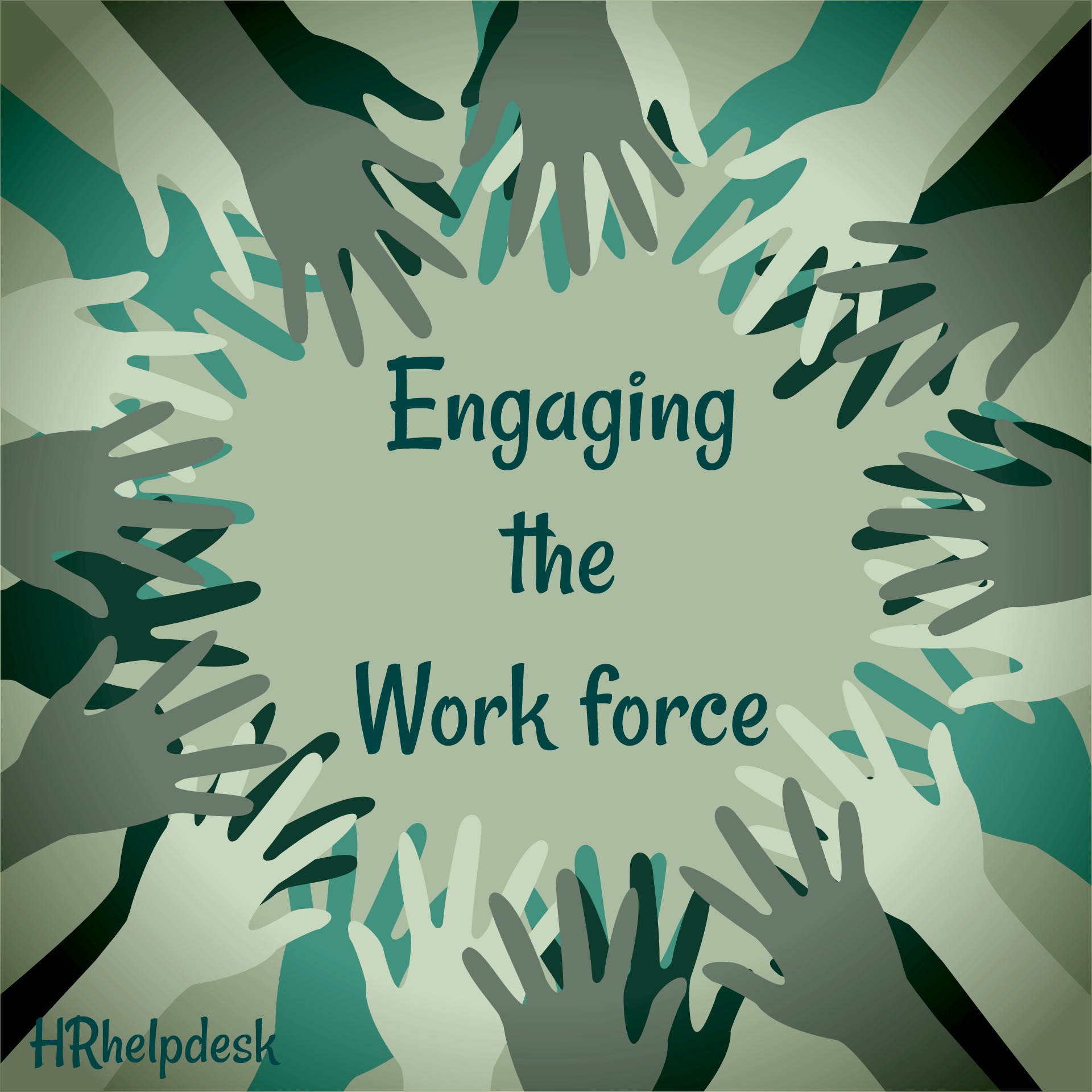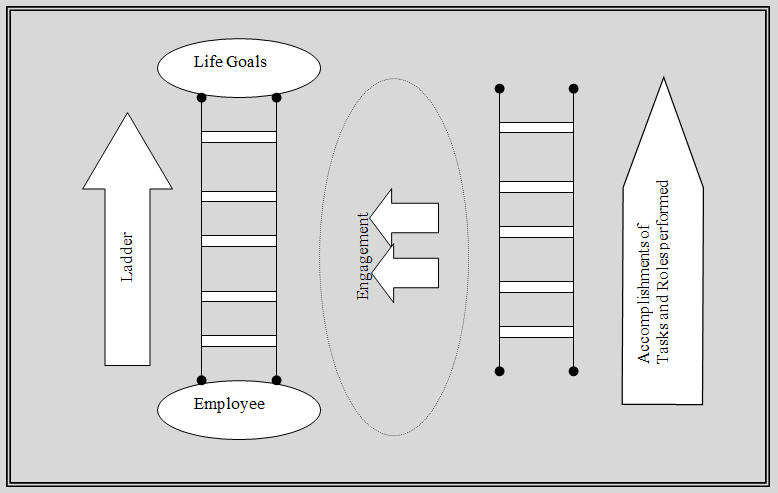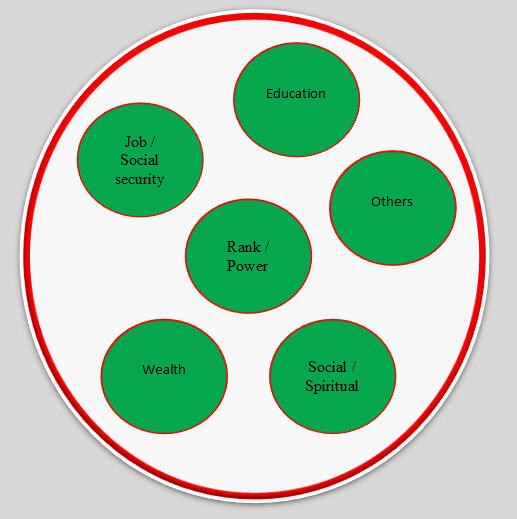Engaging the Work force: Employee Value Proposition & Culture Building
By Mandeep Singh
Partner – Talent & Rewards, www.hrhelpdesk.in

1. Defining Employee Engagement
Peter Drucker, who pioneered today’s employee engagement concepts with his book “The Concept of the Corporation” in 1946, stated that management could achieve sustainable profits only by treating employees like valuable resources and that decision-making power should be decentralized, including giving hourly workers more control over factory life and guaranteed wages.
These days, the much talked about phrase “Employee Engagement” has various meanings and narrations to explain what it means. The definitions vary depending on the context they are being used for and to the industry.
The simplest definition which comes closest to a layman’s understanding is one by Derek Stockley, who defines it as “The extent that employees believe in the mission, purpose and values of an organization and demonstrates that commitment through their actions as an employee and their attitude towards the employer and customers”.
The underlining meaning of the same being, “The individuals ‘feeling of belonging’ to the company and to the values the organization stands for”. If we were to break it into even smaller levels and find the underlining meaning for this, it would simply translate to, employee engagement as, “The degree of commitment to the work an individual performs”.
What this means is, at the base level, every individual must be engaged to the tasks he or she performs as part of the organization. It also translates to the fact that the ‘relation of engagement is to the tasks performed’ and it may or may not be directly linked to the organizational vision and goals.
2. Why do we need employee engagement?
In today’s dynamic environment, the organization not only is responsible for delivering the products or services for which they are primarily responsible, a key part of their activities goes around the process of managing its employees. Employee management is directly related to the bottom line of the company, the better the employees are managed better is the reflection on the bottom line.
The Practices and behaviours create the specific working conditions that influence an employee to be motivated, passionate and emotionally committed to their work and to their company. In simple words, it adds to higher productivity, a much more vibrant environment and higher retention of the workforce. The higher the Engagement scores, higher we take the organization towards the concept of a “Utopian Organization”. Individuals when become a part of any organization, as part of the psychological contract expect to be developed not only in the skills for which they are hired, but also be developed in order to have the competencies to meet their life goals and excel in life as a whole. Gone are the days when individuals would perform at their peak to be a high producing individual and a recognized individual in the limited work environment he or she worked in. The demands are now to adapt and learn skills, which come in handy in day-to-day affairs and give them an opportunity to outreach and tickle their grey cells.
An environment wherein the output of an individual is limited only to his primary task would be a closed or limited environment for an individual to have intellectual stimulation.
By choice most individuals like order and stability, most individuals would want to be committed to an environment and an organization to see fulfilment of their own personal life goals and ambitions.
One of the biggest needs satisfied by Higher engagement is the Social need, the higher one is engaged in the organization, the higher one is involved in social activities involving colleagues and friends.
The higher the engagement, higher on Maslows pyramid the employee is. Moving towards the self-actualizing phase.

This model tells the need of an employee fulfilling his life goals via the daily tasks performed. With a definite & measurable return on investment the employee is putting, he sees a necessary goal being achieved, the Life Goal. To work towards the rewards, the recognition, all the things that we need to have someone engage. The employee, no matter, what he does looks at what is in “it” for me. That’s why we have motivational dis-balances and lower engagement scores. If a person can’t relate to a task, he or she can’t be engaged to the task, the only way a person can relate to the task is if one sees some gain to self (can be at philosophical or material level) by performing that task.

Majority of life goals can be clubbed under the heading as mentioned in the “Life Goal Universe” like,
Wealth: A person would work towards accumulating or increasing ones wealth earning abilities to take care of various things. Can be material or non-material, could even be just to come at par with the peer to satisfy one self on the self esteem side. If as an employee ones Life Goal is earning high and accumulating wealth for a period of time, tasks should be related to wealth, by doing so we are increasing chances of the employee being engaged to the task.
Education: At a particular stage in life, people want to acquire certification, degrees or diplomas, primarily to fulfil the need to be recognized in the attainment of other Life Goals, like wealth or Social security. A person wants to enhance something in the present status, so one gets into the Life goal stage of Education. There are instances when a person wants to acquire education to be an educationist or learn. When one is in this Life Goal attainment stage, we must be able to show the individual how the tasks performance is being either rewarded or related to education or learning. We will have a chance of an engaged employee to these tasks.
Job/ Social security: An individual may want social security for numerous reasons, to either compliment other Life Goals or be a stand alone goal in itself. This need is one of the dormant needs and resurfaces every now and then. For example, when we look for career shifts, it plays it’s part. Right after college it plays its part. More from a standpoint of reconfirming that we are there to provide you social security this Life Goal acts as an engagement activity.
Rank/Power: By design the Human machine needs to control fellow humans, that is, whoever can be controlled. For this reason, people yearn for higher positions, take decisions that frees them from being controlled by others and gives them the feeling of being absolute powerful in their own little or big, dependent or independent islands. This is a need which drives lot of people and it prominently figures out as the life Goal for more than 60% of the workforce in the Junior to Middle Management in today’s corporate world. Tasks if related to this will have a great degree of engagement by the employees. Growth and higher responsibilities tends to be one of the most important factors for leaving jobs today.
Social / Spiritual Service: As one tends to settle down with other Life Goals, somewhat like Maslows Self Actualization stage, this Life Goals becomes important. Contribution towards this comes at quite a late stage in terms of running through a cycle of ones Life Goals.
It is not important to have only one Life Goal at a time, normally an Individual would be trying to attain multiple Life Goals together, linked to each other with complex inter-linkages, that’s where the main thing begins.
Thereby, one is engaged if one sees any one of their present life Goals being met by the tasks they perform.
The tasks need not be in ranking order; they can vary from time to time and from individual to individual. Fulfilling any of the above and we have for sure found the Fuel to human mind. Suddenly you’ll find the same person much more productive, creative, motivated, positive, and the organizations ambassador!
More to read
Diversity, Climate Change and the Rubix Cube
Benefiting from Performance Management – The Achievement Cycle
